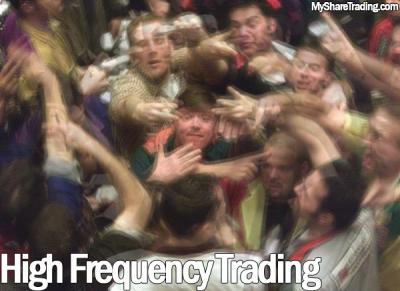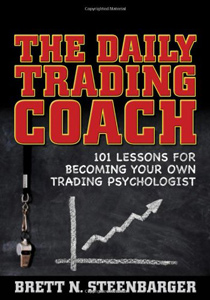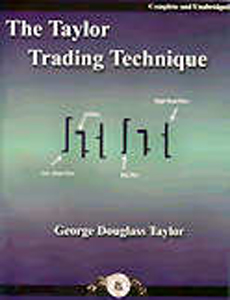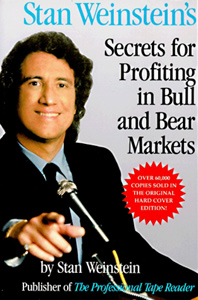High Frequency Trading

Further Reading
For Wall Street Traders, high frequency trading is a Godsend. For "mum and dad" investors - sharemarket participants who hold for the long term, this market activity won't disadvantage them as much. However for retail day traders, this type of trading would disturb you. High frequency trading has been credited as being the method big banks and hedge funds such as Goldman Sachs has made a profit in the last year, even with the Global Financial Crisis (GFC) happening. There is a pending case in the courts involving an accused former Goldman Sachs programmer stealing computer codes for such a trading strategy.
What is High Frequency Trading?
High frequency trading is the new craze with Wall Street traders. High frequency trading is when hundreds of thousands, even millions of orders are pumped through the stockmarkets such as the New York Stock Exchange (NYSE) within milliseconds. They involve supercomputers working alongside computer software which are called "algos" or algorithmic software programs. This is qualitatively different from "program trading". These new algos are much quicker: quick to adapt to market situations, changing trading strategies to suit the situation and quick to execute orders.
The whole market ordering process is sped up even more because the actual trading software and computers have co-located servers alongside the servers running the markets. The computers have the ability to analyse the market and change strategies within milliseconds. There is massive money being made in this industry: the TAP group recently said that there is about $21 billion made using this high frequency trading strategy alone this year.
Goldman Sachs has recently released their profits which left people wondering where they made all their money during the GFC. Also, there is a case in the courts involving an accused former Goldman Sachs programmer stealing computer codes for such a trading strategy. The funny thing is that a federal prosecutor said that this software could "manipulate markets in unfair ways". Imagine if this software falls in the wrong hands? Who says that it is in the "right hands"?
How is High Frequency Trading Executed?
Retail traders who are day trading cannot compete on the same level as high frequency trading. For example, a share trader or an investor wants to buy a stock at $30. They put in the order. The algo’s computers are allowed to take an early peek at the orders before it is published to everyone. They detect your order, buys the stock before you at $30 and sells it to you for $30.01. They make 1 cent. Imagine this happening over and over again, millions of times over. This is big money. To confuse things more these trading algos can issue and cancel many small orders at the same time. Proof of this is happening is in the numbers. The average daily trading volume has increased by 164 percent since 2005 on the NYSE.
High frequency trading is occurring because of a loophole in the trading rules of the stockmarkets. Why do they allow it to happen? It all comes down to profit: the more trades, the more fees they can charge. What is the loophole? The rule created a few years ago stated something along the lines of a requirement to publish all bids and offers to every participant on the market instantaneously. The definition of "instantaneously" is half a second. But the grey area comes in them computers can now operate faster than that half a second (0.5 seconds). These high frequency algos can execute trades in 30 milliseconds. New York Times wrote about this last week.
- How to Trade Forex and Gold Options
- How to Trade the Gold Price and Profit!
- Forex Trading the EUR/USD Pair € EURO and $ US Dollar
- How to Trade Stock Market Indices S&P500
- How to Trade Crude Oil
- Forex Trading Psychology
- What Are Broker Recommendations?
- Free Tickets to Trading & Investing Seminar & Expo ($18) Brisbane 2013
- Stock Calc App
- All About Warrants
- Introduction to Exchange Traded Funds
- Introduction to Exchange Traded Funds: Features
- Introduction to Exchange Traded Funds: Domestic ETFs
- Introduction to Exchange Traded Funds: International ETFs
- Exchange Traded Commodities
- Australian Stock Scan
- Australian Online Share Trading
- List of Trading Books
- Interesting Thoughts about the Australian Dollar
- What's the Meaning of Hawkish?
- Do You Know How To Use the P/E Ratio
- Trading, Religion and Politics - Do They Have Anything in Common?
- Shares that are Volatile that Double and Half in the Short Term
- Telstra (TLS) T3
- Margin Call by E-mail
- The Cost of Holding a Position
- Lack of Disclosure: Compensation from ASX Listed Company
- Unrealistic Returns and Benchmarks
- CMC Markets Down
- Quality versus Quantity Forex Trading
- Woolworths 1H Sales $30.7bn up 3.2%
Date added 31-01-2013 - ASIC Fines CommBank's CommSec
Date added 25-09-2012 - Industry Super Network Calls to Ban High Frequency Trading (HFT)
Date added 22-09-2012 - NAB Launches Online Share Trading Platform
Date added 19-09-2012 - Reserve Bank of Australia Says 23 Countries Holding AUD
Date added 18-09-2012 - Australia Post Digital Mailbox
Date added 10-09-2012 - Winners and Losers of Trading for Week 2
Date added 16-01-2012 - 2012's First Week of the Best and Worst Traded Stocks
Date added 09-01-2012 - 2011's Last Best and Worst Traded Stocks
Date added 05-01-2012 - Best and Worst Pre-Christmas Traded Stocks
Date added 30-12-2011 - Trading Winners and Losers for Dec. 12-16
Date added 19-12-2011 - Best and Worst Traded Stocks for Dec. 5-9
Date added 13-12-2011 - Top 3 Best and Worst Traded Stocks
Date added 05-12-2011 - ASX Glitch Trading Halt
Date added 27-10-2011 - Worst Trade Stocks (and the Best)
Date added 06-08-2011
Top 150 Public Companies Listed on the Australian Stockmarket as at 29/05/2009
- BHP Billiton
- Westpac Banking Corporation (WBC)
- Commonwealth Bank of Australia (CBA)
- National Australia Bank (NAB)
- Telstra (TLS)
- ANZ
- News Corporation (NWS)
- Woolworths Limited(WOW)
- Woodside Petroleum Limited (WPL)
- Rio Tinto
- Westfield Group (WDC)
- Westfarmers Limited (WES)
- QBE Insurance
- CSL
- Newcrest Mining Limited (NCM)
- Origin Energy Limited (ORG)
- Santos Limited (STO)
- AMP Limited (AMP)
- Macquarie Group (MQG)
- Foster’s Group Limited (FGL)




